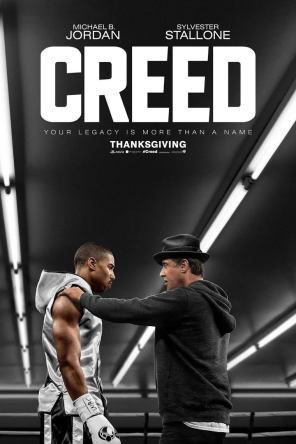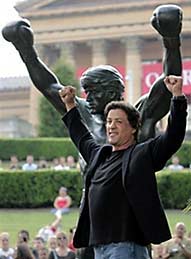 William Dale, M.D., Ph.D., recently joined City of Hope from the University of Chicago, where he was an associate professor of medicine and section chief of Geriatrics and Palliative Medicine. He completed his medical and graduate school education at the University of Chicago, and his residency in internal medicine and geriatrics fellowship at the University of Pittsburgh. He is a board-certified geriatrician and palliative medicine physician with a doctorate in health policy.
William Dale, M.D., Ph.D., recently joined City of Hope from the University of Chicago, where he was an associate professor of medicine and section chief of Geriatrics and Palliative Medicine. He completed his medical and graduate school education at the University of Chicago, and his residency in internal medicine and geriatrics fellowship at the University of Pittsburgh. He is a board-certified geriatrician and palliative medicine physician with a doctorate in health policy.
Q: What brought you to City of Hope?
I knew of City of Hope primarily through my association with long-time colleague (Vice Provost) Dr. Arti Hurria. We both have keen interests in geriatric oncology. I also knew of the well-respected Department of Supportive Care Medicine here, which is a rather unique model that doesn’t exist elsewhere. Here, the department brings together so many aspects of comprehensive cancer care under one umbrella: palliative care, social work, psychology, psychiatry, patient education, patient navigation, volunteer services, and the Positive Image CenterSM – 13 divisions in all. It is very rare to have so many disciplines working closely together under one roof. Most places have to pull together multiple providers from several different places, but it makes perfect sense to keep the patient at the center of your care and to know they have a team around them. We do that.
Q: Many think that “supportive care” and “palliative care” are interchangeable terms. Are they?
Palliative care is a holistic specialty that focuses on maintaining a patient’s quality of life and managing their symptoms. Its focus is on maintaining a high quality of life throughout the cancer care journey, including when therapies aren’t available to control the cancer and the patient is nearing the end of life. Hospice care – caring for patients in the last six months of life – is often confused with palliative care. While hospice care is part of excellent palliative care, they are not the same. Supportive care is a broad-based patient care approach, while palliative care is a medical specialty that focuses on preserving quality of life. Our department is inclusive.
Q: Tell me about your role as chair. What would you like to accomplish?
I envision supportive care at City of Hope being the top program in the world. We already have a unique world-class clinical program. What we haven’t had enough of is scholarship in supportive care, which we are building. I want to bring researchers here, which we’ve already started by recruiting a senior-level director of research we’ll be announcing soon. Also, we’ll have a new concentration on geriatric medicine – the care of older adults. Finally, I have a great interest in models of cancer care. Creating programs for optimally caring for vulnerable patients on a financial foundation of personalized care, integrating oncology and supportive care that is sustainable.
I want City of Hope to be THE place, the standard for supportive care programs.
I want City of Hope to be THE place, the standard for supportive care programs.
Q: How did you come to choose a specialty in geriatric palliative medicine?
I’ve always liked older people! I remember caring for them when I was in an intern in internal medicine – when my colleagues avoided the complex older patients with multiple problems, I liked the challenge these patients presented. In my VA clinic in Pittsburgh, I loved hearing fascinating stories from the old World War II vets. Older people can have quite a few health problems already: They may have several diseases – hypertension, cardiovascular issues, diabetes – and then you add cancer on top of that – it’s a lot to deal with. There are unique challenges and considerations when taking care of this age group.
Q: How do you expect to be involved in research in your new role?
I have always been interested in medical decision making and health services research, which we will build at here. Much of the data we currently have from cancer treatment trials comes from a younger, healthier set of patients. While there are a few older patients enrolled, they are largely healthier patients who don’t represent the majority with cancer. So we often don’t know how a less fit older patient will respond to most therapies – we just have to guess, often causing lots of side effects. We need research that will allow us to make more informed decisions for our older patients, based on better data, and to using interventions and a system of care tailored for them. If we can target interventions that get results that truly improve their functioning and quality of life, then they aren’t in the hospital as often. The older, sicker patients are the ones who currently use the most resources, and tend to be the most expensive – for them, us and society. How can we better care for them? Often, supportive care interventions are the answer.
Q: Is there research you are leading now related to this?
Arti (Hurria) and I are continuing to collaborate on several studies, including a recently submitted National Institutes of Health grant that would build a nationwide research infrastructure for older patients, which also includes my City of Hope colleagues in supportive care (Executive Director Matthew Loscalzo, L.C.S.W., the Lilliane Elkins Endowed Professor in Supportive Care Programs), nursing (Nursing Research Director Betty Ferrell, Ph.D., R.N.), and aging science (Population Sciences Professor Mark LaBarge, Ph.D.). We want to get better, more representative data for these patients who have the highest burden of cancer and other diseases, as well as mentor young researchers to enter the field. Along with the new Center for Cancer and Aging here, which Arti, Mark and I lead, we want City of Hope to be the national leader in this type of research. They can come to City of Hope, and we would have some national level resources we can give them access to.
Q: Did you always want to be a doctor?
As a kid growing up in rural Illinois, with animals always around both inside and outside the house, I wanted to be a veterinarian. But, I’m ultimately a people person, and I wanted to make a difference in people’s lives, so I became a doctor. I’m also a bit of a policy wonk about health care, so I earned a Ph.D. in health policy. Melding my clinical love of older adults with my research love for medical decision making and health services, I look forward to building a department that brings this together.
Q: How are you liking LA so far?
Although I’ve spent my entire adult life in the Midwest, almost entirely in Illinois, I am loving Southern California! My very first job as a 16-year-old in Illinois was as a lifeguard. I loved being at the pool all summer, and spent seven years doing that. During that time, my favorite bands were The Beach Boys and The Eagles, and I fantasized about living in LA! When this job came open at City of Hope, it was a dream come true from my youth.








